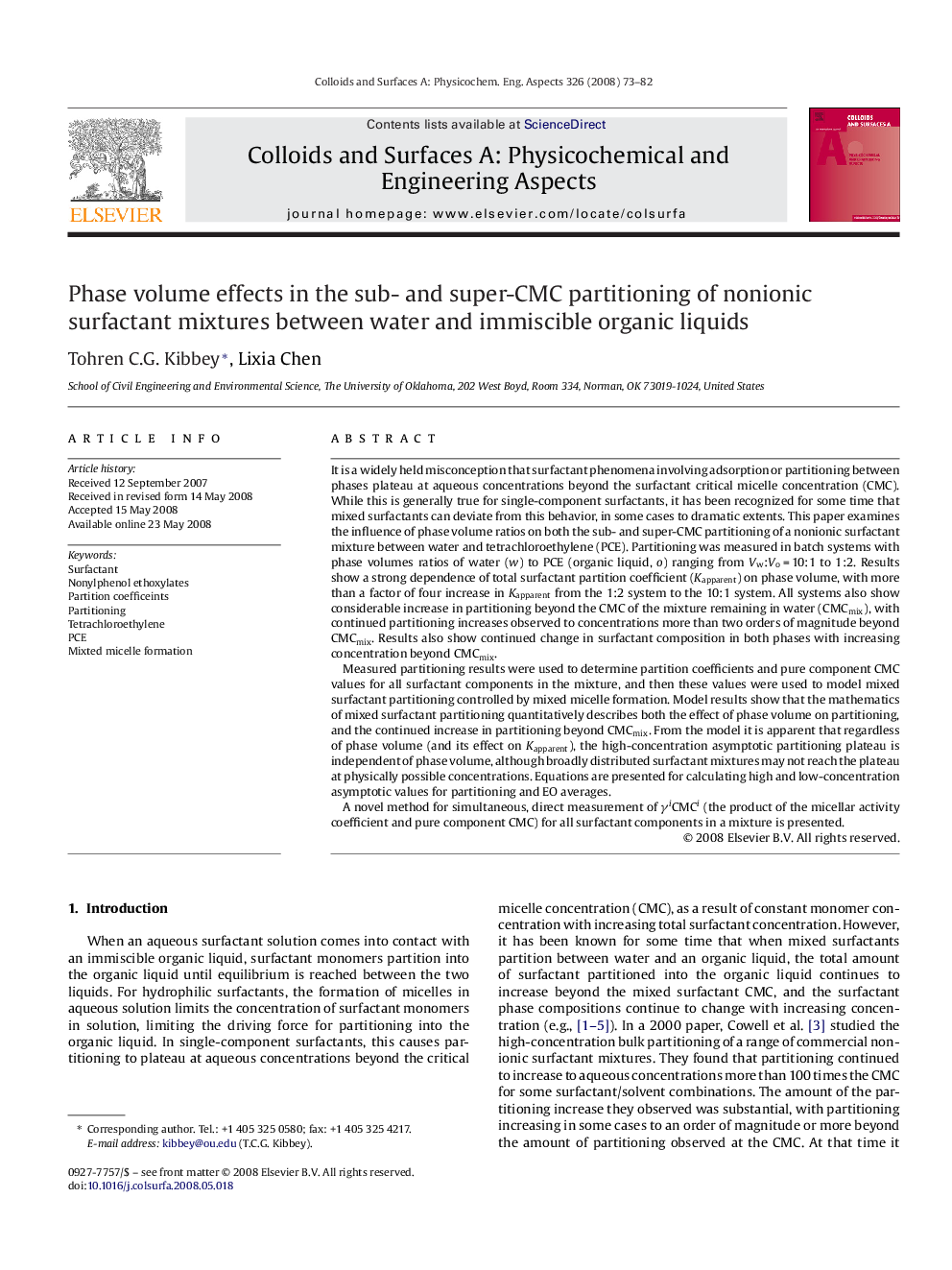| Article ID | Journal | Published Year | Pages | File Type |
|---|---|---|---|---|
| 596376 | Colloids and Surfaces A: Physicochemical and Engineering Aspects | 2008 | 10 Pages |
It is a widely held misconception that surfactant phenomena involving adsorption or partitioning between phases plateau at aqueous concentrations beyond the surfactant critical micelle concentration (CMC). While this is generally true for single-component surfactants, it has been recognized for some time that mixed surfactants can deviate from this behavior, in some cases to dramatic extents. This paper examines the influence of phase volume ratios on both the sub- and super-CMC partitioning of a nonionic surfactant mixture between water and tetrachloroethylene (PCE). Partitioning was measured in batch systems with phase volumes ratios of water (w)(w) to PCE (organic liquid, o) ranging from Vw:Vo = 10:1 to 1:2. Results show a strong dependence of total surfactant partition coefficient (Kapparent) on phase volume, with more than a factor of four increase in Kapparent from the 1:2 system to the 10:1 system. All systems also show considerable increase in partitioning beyond the CMC of the mixture remaining in water (CMCmix), with continued partitioning increases observed to concentrations more than two orders of magnitude beyond CMCmix. Results also show continued change in surfactant composition in both phases with increasing concentration beyond CMCmix.Measured partitioning results were used to determine partition coefficients and pure component CMC values for all surfactant components in the mixture, and then these values were used to model mixed surfactant partitioning controlled by mixed micelle formation. Model results show that the mathematics of mixed surfactant partitioning quantitatively describes both the effect of phase volume on partitioning, and the continued increase in partitioning beyond CMCmix. From the model it is apparent that regardless of phase volume (and its effect on Kapparent), the high-concentration asymptotic partitioning plateau is independent of phase volume, although broadly distributed surfactant mixtures may not reach the plateau at physically possible concentrations. Equations are presented for calculating high and low-concentration asymptotic values for partitioning and EO averages.A novel method for simultaneous, direct measurement of γiCMCi (the product of the micellar activity coefficient and pure component CMC) for all surfactant components in a mixture is presented.
